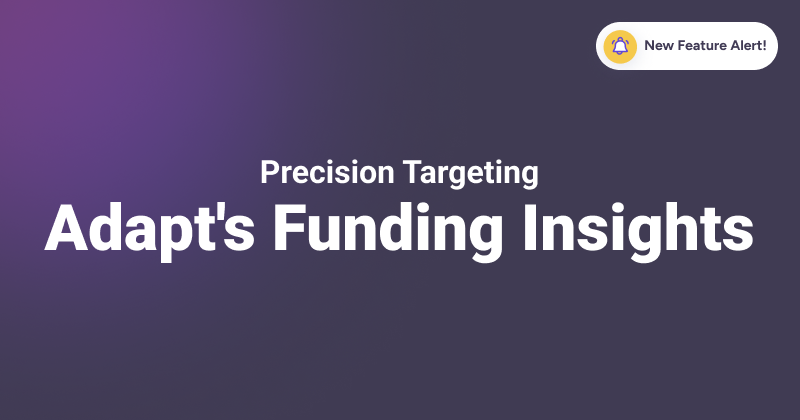How to make ABM work for your organization?
Organizations must follow three things to enjoy the benefits of an efficient account-based marketing strategy:
- Marketing and sales must align.
- A multichannel strategy is optimal.
- Investment in ABM software is essential
B2B sales and marketing collaborate to determine the target accounts for a value-based marketing campaign. The sales team will then upload a list of prospects to the CRM. During this process, they can also connect any account-based marketing technologies required to run campaigns at scale.
This technology facilitates the execution of tailored account-selling campaigns that reach B2B buyers via every marketing channel they employ. Each ad is hyper-personalized across video, display, social, and mobile to guarantee that you engage prospects with a message that connects with them.
B2B marketers will execute A/B tests on these creatives for maximum success.
And because your sales representatives are connecting with potential customers on their terms rather than cold calling or sending bulk emails, they are less likely to irritate a prospect while simultaneously fostering brand loyalty.
This multidimensional approach to sales and marketing makes ABM an essential B2B marketing strategy.
To ensure that your ABM strategy is effective, you must evaluate, measure, test, and change. Making the appropriate modifications for each account begins with understanding the right ABM metrics to track, which can be obtained from an account-based marketing solution.
The most important ABM metrics to look out for
1. Website Traffic from Targeted Accounts
Your marketing efforts bear fruit if you see an increase in website traffic, but only if those people stick around for extended periods. High traffic levels and high bounce rates may indicate that you are not successfully drawing in the intended demographic. That’s why it makes much more sense to gauge genuine progress by tracking site visitor growth from selected accounts.
The marketing department’s ability to correlate IP addresses with accounts (using reverse IP lookup tools). By monitoring activity from these IP addresses, you can keep tabs on how your targeted accounts are using the internet. Cohorts can be created based on demographics and browsing history, which can be used for further segmentation and targeting.
Successfully raising brand recognition and bringing in more potential customers can be demonstrated by a noticeable rise in the number of targeted accounts accessing your website.
To get the exact percentage of your website traffic that comes from targeted accounts, simply use the following formula:
No. of visits from targeted accounts x 100 / Total no. of visits
2. Pipeline Velocity
Because ABM is a more tailored approach to marketing and sales, you should observe that deals are closed more quickly and effectively; however, you will only know for sure if you begin analyzing pipeline velocity. Pipeline velocity is the average time it takes for a deal to go through its phases and close. If your pipeline velocity is not higher for ABM deals, then you should assess your ABM efforts (content, targeting, etc.) to determine why velocity has not increased and what you can do to remedy it.
Measuring pipeline velocity as a metric is essential for identifying sales cycle possibilities and bottlenecks and determining how long it takes for accounts to reach a final yes/no decision. It is also essential to compare your current sales cycle under an ABM strategy to cycles in the past.
To determine your pipeline velocity, use this formula:
No. of opportunities x Average deal size x Conversion rate / Sales cycle length (in days)
3. Sales Cycle Length
Your sales cycle will be longer if you focus on enterprise clients. But, unfortunately, monitoring is still required. When you adopt an account-based marketing strategy, your efforts are more personalized, targeted, and practical, usually resulting in a shorter sales cycle.
Although the sales cycle is a natural process, keeping track of it will help you close more deals. The number of days it takes to complete a sale (beginning with the initial point of contact and ending with the final sale conversion) is the number of days needed to determine the average cycle duration.
4. Average Contract Value (ACV)
The average size of a contract is a measure of how successfully you identified growth potential during the sales process and how well your most valuable offerings aligned with the needs of each account.
Finding an account to increase the size of an existing deal by satisfying unanticipated demand is equivalent to (and frequently simpler than) obtaining an entirely new, valuable customer. Also, tracking ACV across multiple cohorts or marketing programs will help you make sure that every customer you sign up knows about the full range of your products. This will allow you to use advertising or other channels in a more targeted way.
ABM metrics that count have been outlined. Once your demand engine is oriented in this way, you’ll be able to zero in on what’s truly important while also discovering more options for high-revenue-impact activities.
5. Deal Close Rate / Win Rate
It’s a positive sign if you can close a high percentage of the accounts you’re pursuing. It illustrates:
- Your account selection criteria
- The viability of your ABM campaign
Companies utilize win rate to evaluate which time periods, salespeople, and win/loss causes have the highest possibility of converting a prospect into a customer.
In other words, it’s not just about improving from quarter to quarter; it’s about improving over time.
The win rate is easily calculated by dividing the number of closed/won deals by the total number of deals in the pipeline.
The monthly, quarterly, and annual victory rates can be calculated to monitor development. To ensure that everyone in your organization is on the same page as to which is the “norm,” you should also identify which.
A review of your deal closing provides an opportunity to extrapolate qualitative insights from initially quantitative data. You may be asked things like:
- How has your percentage of deals closed changed over time? Why?
- Is there a particular market where you consistently have a greater success rate? Even lower?
- Are you usually successful (or unsuccessful) when referring to certain competitors?
- In which situations do you have the most success? To what extent does this differ from your ICP?
- If you’re going to lose, ask yourself why. Exist recurrent causes of cases being lost or closed?
6. Pipeline Growth of SQAs and MQAs
Your sales and marketing teams can observe the positive effects of an ABM strategy by tracking the rise in the number of marketing qualified accounts (MQA) and sales qualified accounts (SQA).
While many B2B teams keep tabs on Marketing Qualified Leads (MQLs) and Sales Qualified Leads (SQLs), in order for these to become qualified accounts, they must meet certain predetermined engagement qualifications based on behavioral activity (such as registering for a webinar or downloading online content) that signal likelihood of a conversion.
The following formula can be used to determine the expected number of MQAs and SQAs as a result of ABM:
No. of MQAs or SQAs / No. of correlating MQLs or SQLs
7. Target Account Coverage
How many members of the account did you interact with? How in-depth are your account records? How certain are you that you are contacting the proper individuals at those companies?
ABM marketers face significant challenges in targeting the proper accounts and the relevant persons within those accounts. After all, you won’t know if the individual you’re targeting is the best person until your campaigns begin. Tracking your coverage numbers, on the other hand, will assist you ensure that your team is targeting the proper people.
Examine the following areas to determine your coverage metrics:
- The quantity of contacts contained within each account
- The proportion of your contacts with whom you have established a connection
- The number of contacts you have with complete information
- The expansion of your contact list within each account
If you want to gain buy-in from decision-makers, you must make an effort to have high target account coverage. Otherwise, you’ll have to rely on their being sold to by their own internal team.
8. Account Engagement
ABM is most successful when interactions between a company and its accounts are hyper-personalized, but personalization has its limits. If you notice a decline in engagement from target accounts, you should investigate their conduct in further detail. Create an engagement model that tracks the different ways an account engages. You might want to give different weights to various interactions. A 30-minute phone call could be worth 5 points, yet a like on a LinkedIn article could be worth only one.
Account engagement as a metric is critical for analyzing and fine-tuning your ABM approach. Is a certain account more responsive to email than to blog content? Are your emails being delivered correctly? Where are they engaged in the email? For example, if you’re having better success with an account by using email signature marketing, it’s time to ramp up your efforts. Engage with customers where they’re most comfortable.
9. Content Engagement Rates
How engaged are your target audiences with your content? What are they interested in? For instance, if you designed a personalized landing page for an account, you’ll desire a page engagement rate of 60 – 70%. Engagement rates should rise if your targeting and personalization are effective.
Examine the following factors of your marketing to determine your content engagement rate:
Viewability of content: It refers to how long your target prospects spend reading your material, how much time they spend on specific pages/sections, which assets they download, and other factors. It’s a good approach to see what content resonates with your audience and which accounts are getting ready to buy.
Email marketing metrics: Do your leads respond to your outreach emails? We recommend concentrating on the positive response rate. Metrics such as open rate and click-through rate are useful, but they are not as crucial.
Advertising Engagement Rates: Are your target accounts responding to your paid advertisements?
Conversion rates for content: How do your target audiences consume material on your website or blogs? Is your material having the desired impact? Prospects are downloading gated assets?
These will assist you determine early on whether the type of material you’re producing and the means you’re using to distribute it are effective.
10. Customer Retention Rate
Repeat clients are significantly more valuable than first-time customers, and they also cost far less to sell to again. Businesses who used an effective ABM approach had 36% greater retention rates on average.
If the difference between total conversions and repeat clients is substantial, indicating a low retention rate, your “churn rate” is high. As a result, if your stats don’t improve over time, it could indicate that you’re failing to cultivate connections with target accounts beyond the original sale.
As a result, understanding how your ABM techniques influence client retention is critical to calculating the actual ROI. Calculating the retention rate is straightforward: No. of repeat customers / Total no. of customers
11. Customer Lifetime Value (CLV)
CLV, which is the amount a typical customer provides to your firm over the course of your collaboration, can be a beast.
There are two methods for calculating it, which can be somewhat perplexing at first. For the purpose of a blog article and to keep things simple for those of us who never reached our full academic ability, we’ll stick to the straightforward method:
How to Calculate Customer Lifetime Value

Therefore, if on average your clients:
Annually contribute 1000 profit
Remain a client for five years
The CAC costs $2000.
The CLV is £3000 ($1,000 x 5 – $2,000).
As it is the simplest method of calculating, it does not take into account all the costs of servicing the customer nor an appropriate discount rate, but given that you’re likely not measuring this at all currently – even the simplest model will provide very interesting new insights into your marketing and business development efforts.
CLV is a very strong statistic to input into the ABM process because ABM is all about creating a marketing campaign that targets a small number of organizations.
You create a list at the start of an ABM campaign. You collaborate with sales, and there is sometimes lively disagreement over which accounts to target for your forthcoming campaign. What better metric to experiment with than CLV?
When you start slicing your data by company size, revenue, and vertical market, a picture of the best firms to target emerges before your eyes.
Measurement is the key to ABM success
Measuring ROI and other success measures is essential for the successful execution of an ABM strategy. By understanding these KPIs, you will be able to justify spending and demonstrate the benefit of marketing to your organization. Tracking these data will allow you to evaluate the effectiveness of ABM for your pipeline building, marketing activities, and sales outreach.
Investing in an ABM campaign might be costly. Don’t spend a lot of money on advertising before you find out if it’s actually helping your firm. Before launching your campaigns, you need a system to keep tabs on every interaction, response, and result.
Adapt.io can assist you in launching your B2B campaigns to build pipeline. Our sales intelligence platform can assist you in generating leads at each stage of the sales funnel.


